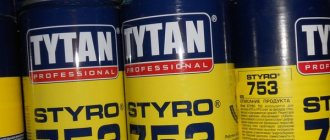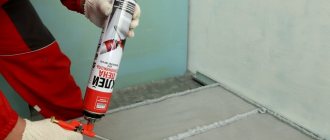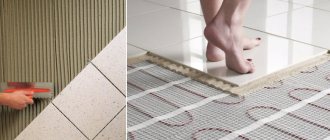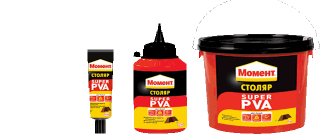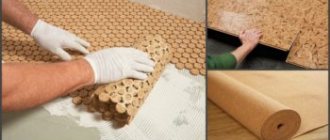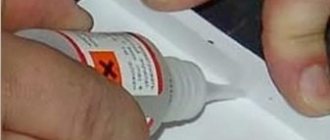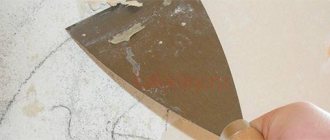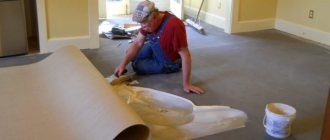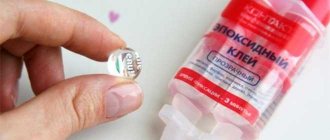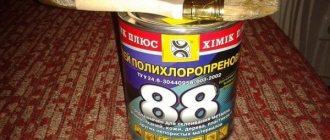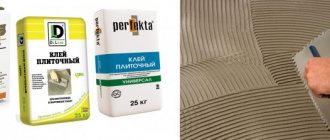Purpose and characteristics of glue
Universal glue EDP is a two-component product (50/250 g), based on epoxy resin and a number of modifiers. A separate package contains a hardener intended for polymerization of epoxy. During use, both components are mixed in the proportion recommended by the manufacturer. Hardening of the adhesive composition occurs only after the introduction of a hardener, which is a full participant in the chemical reaction.
The glue is available in syringes and bottles; they do not differ in properties. Experts note the ease of using the product in a syringe - it is dosed more accurately and is applied better. The description states that the adhesive is suitable for the following materials:
- metal and alloys,
- glass,
- tree,
- porcelain,
- ceramics,
- decorative facing materials.
Restrictions on use are products that come into contact with food - applying glue to them is not allowed. Due to its liquid texture, the product can be used to impregnate fillers - fiberglass, fiberglass, sawdust, paper, fabric. This is often required for automotive, shipbuilding, household and modeling purposes. The glue is used in the repair of bathtubs and plumbing fixtures, interior items and furniture, acoustics, appliances, and electronics. They restore sports equipment, bumpers, and boats.
Types of glue for plastic
Depending on the consistency, composition and principle of action on the surfaces being treated, the following types of compositions are distinguished:
- Liquid products are made based on water or synthetic solvents. They have the most fluid consistency and low level of adhesion. Forms an adhesive seam after the moisture contained in its composition evaporates. Therefore, until complete adhesion is achieved, it is necessary to maintain a period of at least a day. Suitable for joining the lightest, porous surfaces of a small area.
- Contact adhesives are produced in the form of two-component compositions (base and hardener). They form a rigid, inelastic bond that is susceptible to cracks under dynamic or vibration loads. They have a higher degree of fixation compared to liquid adhesives. They can be chemically active and cause poisoning, so personal protective equipment must be used when working with them.
- Reactive adhesives require exposure to certain factors for the polymerization reaction and bond activation. Some compositions are activated by ultraviolet radiation, moisture, lack of oxygen, or, conversely, under the influence of open air.
Form reliable and durable seams. They can glue plastic together tightly at home. Available in the form of one or two-component formulations.
- Hot-melt adhesive is available in the form of a core for special guns or thermal powder. As a result of heating, the composition melts and is applied to the surface of the elements being connected. Recommended for fixing parts of small volume and mass, mainly in applied arts.
Properties and technical specifications
This brand of glue is characterized by the following properties:
- high mechanical strength,
- small shrinkage,
- excellent adhesion to most materials,
- electrical insulating abilities (considered a dielectric),
- resistance to water (the adhesive seam is waterproof).
After complete curing, the product can be subjected to further processing - grinding, polishing, sawing, drilling, and it can also be painted. If necessary, pigments are added to the epoxy before mixing with the hardener, and only then the adhesive composition is prepared. At a temperature of 18-25 degrees, the lifetime of the resin after introducing the hardener is 4 hours. The shear strength of surfaces (using metal as an example) is 8 MPa.
Instructions for use
The prepared composition hardens quickly, so it is recommended to use small portions for mixing. All products that need to be glued should be prepared in advance. To enhance effectiveness, you can use fabric - soaking it will improve adhesion. The fabric is usually gauze, other thin material or fiberglass.
Preparation for gluing
The surface must be washed, cleaned, and degreased with alcohol and acetone. For cleaning, you can use a fine-grain sandpaper. As a result, the base should become dry, free of dirt and dust. If fabric will be used for impregnation, it also needs to be prepared and air dried.
Preparation of the adhesive composition
The instructions for use state that EDP glue must be prepared immediately before use. The proportion is 10 parts of epoxy resin from the first package to 1 part of hardener from the second. How to dilute the adhesive composition? Here is a description of the technique:
- place the bottle with epoxy in water at a temperature of 50-70 degrees,
- hold for 10 minutes,
- take all components in small volumes, based on the indicated proportions (for one division of hardener in the measuring cup there will be 10 divisions of resin on the paper label on the jar),
- mix the resin and hardener well (for 3-5 minutes),
- leave for 10 minutes for air bubbles to escape,
- apply within 2 hours, later gelatinization will begin, and the application of EAF glue will be ineffective, the quality of the seam will deteriorate.
Fillers
Various fillers are introduced into the composition to correct and improve its properties; they will have to be purchased separately. These can be plasticizers, pigments, and all of them are introduced only in dry form. Even a drop of water can ruin the glue. You should carefully read the characteristics of fillers in the instructions for them and add only in the permitted volume. Typically, no more than 10-20% fillers are added to maintain fluidity levels.
Applying glue
The technique of applying glue to fabric is as follows. A suitable cut is placed on top of the product, which will act as a reinforcing layer, and then glue is applied. If necessary, after 12-20 minutes you can lay another row of mass.
Without fabric or gauze, the product is applied in a thin layer to both surfaces to be glued. Afterwards they need to be connected and pressed tightly. It is better to use a vice or heavy objects. Excess glue must be removed immediately after hardening - this will be very problematic. The product should be left pressed until it hardens completely.
Curing time
Curing of EDP glue lasts 24 hours, the time is indicated for operation at room temperature 20-25 degrees. When it increases, the indicator decreases; when it decreases, it increases.
The best heat-resistant adhesives
When the question arises about how to glue plastic to plastic in places exposed to high temperatures, you should pay attention to heat-resistant compounds. Such substances are able to withstand high temperatures for a long time without losing their original strength.
Rexant
Rexant is a clear adhesive for plastic, available in refills designed for pistols. This manufacturer also produces rods in green, blue and other colors, which are used to visually mask joints when gluing colored parts.
Akfix HT300
This heat- and moisture-resistant adhesive sealant contains silicone that hardens when exposed to moist air. The adhesive is highly heat resistant and can withstand temperatures up to 300°C.
When using hot melt adhesive to join plastic, you must remember that the plastic materials themselves are not able to withstand high temperatures.
Elite Dragon
Elite Drakon is a polymer adhesive for plastic, parquet, ceramics, wood and other materials. Using this product, you can glue materials of different compositions without worrying about the quality of the gluing. Dragon has high adhesion and heat resistance.
With the right choice of glue and its optimal use, you can successfully glue any plastic part. Following the recommendations specified in the instructions will allow you to restore a broken item without unnecessary material costs.
Fast curing EDP adhesive
This product is produced in packages of 45/250 g and is two-component. The first bottle contains epoxy and a number of modifiers, the second bottle contains a hardener. Purpose of fast-curing adhesive:
- connection of composite and metal products, objects made of alloys, ceramics, glass, and other materials,
- repair and sealing of devices,
- sealing chips, defects, cracks.
Typically this type of EAF adhesive is used when fast curing is required. The product replaces cold welding.
Advantages of glue
The adhesive composition has the following advantages:
- ensuring the required level of strength 6 hours after application,
- work at a temperature of 10-30 degrees,
- low labor intensity of the process, the ability to process the adhesive seam even before the end of complete polymerization.
Application of fast-curing EAF
Before use, surfaces should be carefully prepared - cleaned, degreased, and dried. To improve adhesion, sandpaper is used. The bottle with resin is placed in water at a temperature of 60 degrees for 8 minutes. 1.5 parts of epoxy are mixed with 1 part of hardener, the resin lifetime is 30 minutes. You can use any fillers - cement, chalk, alabaster, fibers, graphite in a volume of up to 20%. The composition is applied in a thin layer to both surfaces, connected and pressed. Leave the product in the fixed position for 6 hours. Afterwards it is completely ready for use.
Marking of plastics
Manufacturers of plastic products must put a recycling symbol on their products, which looks like an equilateral triangle with arrows on the sides, which symbolize recycling.
Inside the triangle there may be numbers from 1 to 7, as well as letter abbreviations, which, in fact, indicate the type of plastic used to make the product.
What does the marking mean:
- RET. Low-density polyethylene, film, bags and transparent packaging for bulk or liquid products are made from this plastic.
- Also low-density polyethylene, but more dense in structure. Shrink film and packaging bags are made from it.
- V (PVC) – PVC. It is used in the manufacture of household non-food tableware and plastic window frames.
- High pressure polyethylene, low density. Packaging bags for food, drinks, toys, water pipes for drinking water.
- R S. Polystyrene - disposable tableware, food processor housings. It is noteworthy that this material is non-toxic.
- RR. Polypropylene is a heat-resistant (up to 150°C degrees) chemically inactive plastic. Hot water fitting, toys, pipes, medical equipment and ventilation systems, blood pumping, etc.
- O Other (others). Plastics that do not belong to any of the 6 groups, as well as with inclusions of metal, paper and other substances.
Unfortunately, a unified system for unifying adhesives with manufactured plastics has not been developed, so you need to carefully read the information on the packaging of bottles and tubes.
Selection of adhesives for these plastics:
- PC-polycarbonate (covering greenhouses, canopies).
- ABS – acrylonitrile copolymer.
- PP – polypropylene.
- PPMA – plexiglass.
- PE – polyethylene.
- PVC- PVC
- PS – polystyrene.
- PA 66 - polyamide materials.
- PUR – polyurethane.
Useful to know > Inexpensive polyester resin brand Reoflex for household use
